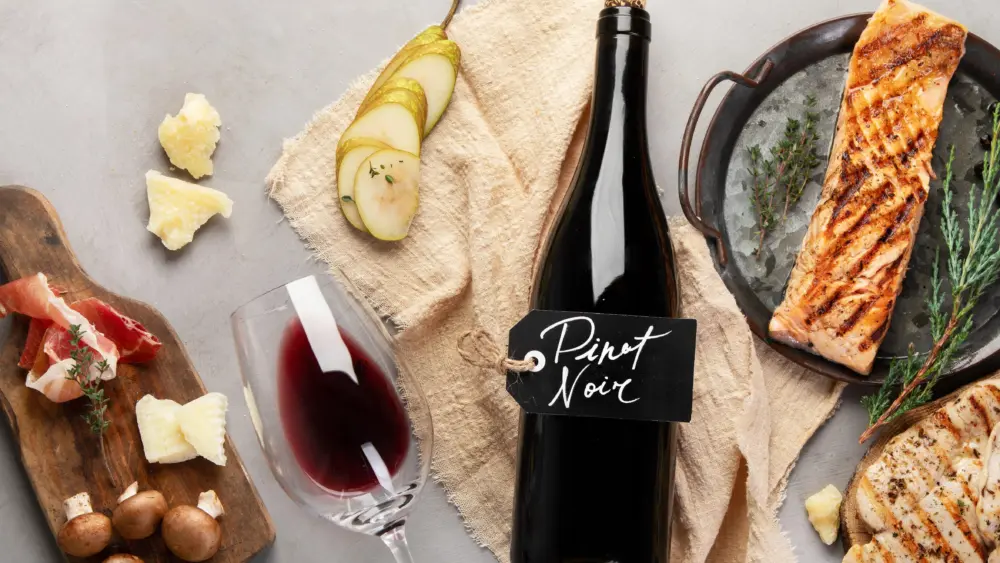"Bringing wine to France is like bringing sand to a beach."
Thomas Jefferson claimed in the early 1800s that, “in nothing have the habits of the palate more decisive influence than in our relish of wines.” Years earlier, he’d traveled to France and learned to love the wines of Burgundy and Bordeaux. Thereafter, our third president rejected the alcoholic wines (Madeira and port) favored at the time and instead chose to drink and serve wines of France and Italy. He hoped his countrymen would follow his example, but Jefferson had another dream: He wanted to grow and make fine wines from American soil.
Nearly 200 years later, in 1976, Northern California’s Wine Country was thrust onto the world stage as able to make some of the finest wines in the world when Chateau Montelena’s Chardonnay and Stag’s Leap Wine Cellars Cabernet-blend won the “Judgment of Paris” tasting organized by British wine journalist and author Steven Spurrier, beating out some of the world’s most highly prized French wine producers. From that single event, careers, fortunes and legacies were created.
The winning Cabernet had been grown and made by Warren Winiarski at his winery in what’s now the Napa Valley’s Stags Leap District American Viticultural Area. The Chardonnay had been grown in Sonoma County (Russian River and Alexander valleys) and then processed at Jim Barrett’s Chateau Montelena by winemaker Miljenko “Mike” Grgich. Both winemakers, Winiarski and Grgich, trained under André Tchelistcheff, who came from France in 1938 to make wine at Rutherford’s Beaulieu Vineyards and became one of the most influential winemakers in California’s history.
“The Paris tasting was a Copernican moment,” said Winiarski, referencing Copernicus, the Renaissance mathematician and astronomer who formulated a revolutionary model of the universe at the time that placed the sun, rather than the earth, at the center.
“If the tasting hadn’t happened, my wine would certainly not be at the Smithsonian today,” Winiarski said. “But somebody’s would. I believe it was inevitable that wines from California would continue to be compared to those in France and that we’d show well. But that tasting cracked the myth of French wine’s supremacy—and once you do that, then others had an opportunity to stretch their aspirations and expand their horizons, no longer beholden to a frame of mind that was bound by limits. We’re still processing the tasting’s impact.”
Think about all the elements that needed to come together to make the Paris tasting happen. First, you needed thousands of pioneers in the United States and beyond to grow and make wine for generations, exploring and refining practices. Cross-cultural collaborations between winemakers and growers happened, then the idea of the tasting and deciding which wine would be included. At that point, the wines had to be transported to France and then judged against French wines. Anyone in the wine business today knows that getting wine into France is a fiasco. I can’t even imagine what it must have been like in 1976.
A few years back, one of my wines was included at a tasting in France. I was honored to have the wine included, but getting the wine to France was difficult—customs and hurdles had to be overcome. It was clear that, although my wine was desired by the American promoters of the event, it wasn’t exactly being embraced by any of the others involved with the process. As one of my French friends told me afterward, “Bringing wine to France is like bringing sand to a beach.”
In 1976, Spurrier and the others on the French side of the equation were putting a lot at risk by having the tasting at all. If California wines won, then what? And what would be the fallout?
We’re still witnessing and assessing the fallout, one part of which seems to include having more people enjoy more wine from different places. Based on wine prices for France’s top producers, the event hasn’t seemed to hurt them much. In California and beyond, the number of wine producers and production has steadily increased. The quality and consistency of wine has increased, too.
“The tasting made Thomas Jefferson’s dream come true,” said Winiarski. “He’d said, ‘We could, in the United States, make as great a variety of wines as are made in Europe: not exactly of the same kinds, but doubtless as good.’ It took 200 years for that to happen, and the significance, I think, is still growing, is still finding new implications and is more inspirational in a larger number of people. It’s like Copernicus: Once you accede to the possibility that the sun doesn’t move around the earth, then you look at appearances differently.”
Author
-

Tim Carl lives, writes and teaches in Calistoga. He grew up in St. Helena and traces his Calistoga grape-growing roots back five generations. You can reach him at tcarl@northbaybiz.com.
View all posts



